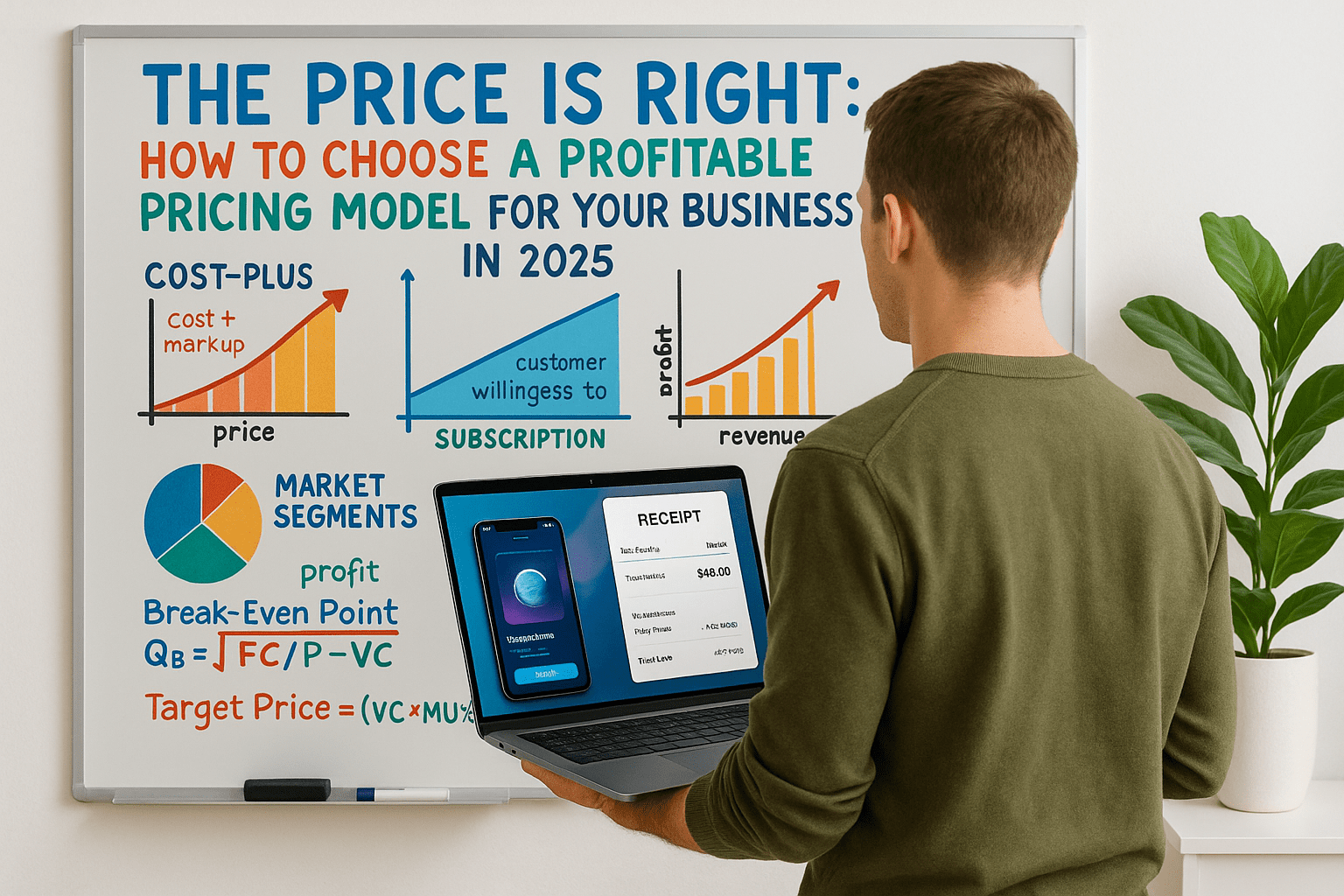
Pricing is one of the most critical decisions an entrepreneur can make—and also one of the most misunderstood. Set your price too low and you risk burnout and being perceived as low value. Price too high without a strategy and you lose sales to better-positioned competitors. In 2025, with rising customer expectations and a saturated digital landscape, having a smart, scalable pricing model isn’t optional—it’s essential.
Your pricing is more than a number—it’s a message. It tells your audience who you serve, how you deliver value, and where you stand in the market. Whether you’re a creative service provider, coach, consultant, or product-based business, your ability to choose the right pricing model directly impacts your profit, sustainability, and growth.
Here’s how to evaluate and implement a pricing model that not only fits your business—but fuels it.
1. Understand the 3 Most Common Pricing Models
To find the right model, you first need to understand the most popular pricing structures used in small businesses today.
Action Step:
- Evaluate these three core models:
- Hourly/Time-Based Pricing: You charge by the hour or session.
- Best for: Freelancers and consultants starting out
- Watch out for: Income capped by time, difficult to scale
- Project-Based Pricing: A flat fee for a defined scope of work or deliverable.
- Best for: Service providers offering repeatable, outcome-based work
- Watch out for: Scope creep, underestimating labor
- Value-Based Pricing: You price based on the value delivered, not time or tasks.
- Best for: Experienced providers with strong results and case studies
- Watch out for: Requires clear client understanding of ROI
- Hourly/Time-Based Pricing: You charge by the hour or session.
Pro Tip: Hybrid models can work well too—such as project-based with value bonuses or retainers with performance incentives.
2. Factor in Profit, Not Just Revenue
Too many small business owners price for sales, not sustainability. A profitable pricing model includes not only your labor, but also overhead, taxes, time off, marketing, and profit margins.
Action Step:
- Use this simple formula to price smarter:
- Desired annual income + estimated expenses + buffer (20%) ÷ billable hours or projects = base rate
- Then adjust based on positioning, perceived value, and competition
Stat to Know: According to FreshBooks, 62% of small business owners in 2024 underprice their services—cutting into long-term sustainability and scalability.
3. Use Tiered Pricing to Increase Average Order Value
Instead of a single price, offer packages. This allows customers to choose based on budget or needs—while nudging them toward your ideal offer.
Action Step:
- Create 3 pricing tiers:
- Basic – Entry-level or DIY-friendly (low-touch)
- Core – Your “sweet spot” offer (most value)
- Premium – High-touch, exclusive, or fast-track experience
Bonus Tip: Use price anchoring to make your mid-tier look like the best deal. For example, if your Basic is $500, Core is $1,500, and Premium is $3,000—the Core tier feels like the smartest option.
4. Test and Adjust Based on Real Feedback
Your pricing isn’t set in stone. It’s a hypothesis—and the market will let you know if it’s off. Don’t be afraid to raise prices, repackage, or shift your offer format based on client feedback and data.
Action Step:
- After 3–5 sales, evaluate:
- Was the client thrilled with the result?
- Did the work feel aligned with your energy and profitability?
- Were there any pushbacks or price objections?
- Use that data to refine your pricing, bonuses, or delivery model
Stat to Know: Businesses that revisit their pricing every 6 months outperform those that don’t by 30% in net profit margins (McKinsey, 2024).
5. Communicate Value Confidently in Your Marketing
Pricing only works when the perceived value is greater than the cost. If people balk at your prices, it’s often a positioning issue—not a pricing one.
Action Step:
- Improve how you articulate your value:
- Focus on transformation, not time or tasks
- Use testimonials and case studies
- Show behind-the-scenes of your process to build credibility
When you price based on value, your marketing must sell results and confidence—not just features or hours.
Conclusion: Pricing Isn’t a Guess—It’s a Growth Strategy
Choosing the right pricing model isn’t about being the cheapest or the most expensive. It’s about finding the balance between delivering value, honoring your worth, and creating profit potential. In 2025, the businesses that thrive are those that price with intention—and evolve with confidence.
Your Move: Review your current pricing model this week. Does it reflect the value you bring and support your lifestyle goals? If not, start restructuring using one of the models above. Remember—your pricing doesn’t just reflect your product. It reflects your vision. Charge like it.


